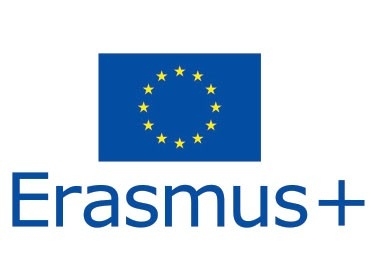Mobility 3 in Ljubljana: Blog
Blog in Slovene
Monday
First thing in the morning we all gathered together in the Matija Tomc Hall in the very imposing buildings of St Stanislav's
Institution which is a private Catholic school, just like the Mallinckrodt-Gymnasium. We were welcomed by the Erasmus
Coordinator and the school's Headmaster and we found out about the programme for the week ahead. Next, the Slovenian
students told us about Ljubljana's eventful history and the importance of Art Nouveau architecture and design for the city.
After the city centre was destroyed in the great earthquake of 1895, whole streets were rebuilt in the Art Nouveau style.
Music education is a very important part of the school's life and we were treated to a small concert given by the
‚Crazy Choir', the students' nickname for one of the school's many choirs.
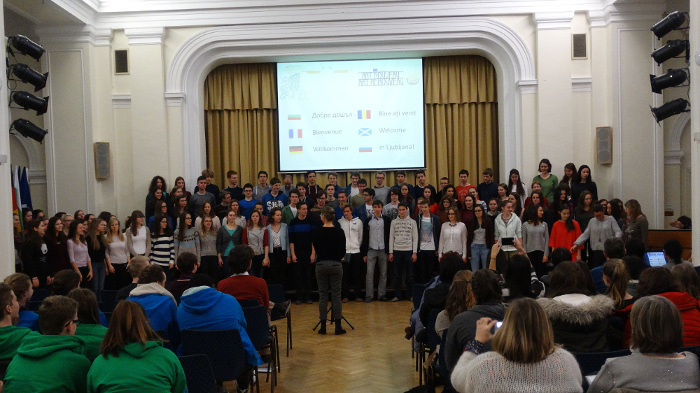
After lunch we set off for a tour of the Art Nouveau highlights of Ljubljana. We were put into mixed international groups
with French, Romanian, Scottish and German pupils. (The Bulgarians had missed their plane due to heavy snow in Bulgaria and
joined us in the middle of the second night.) As part of the Erasmus Project, each school is to design an Art Nouveau Town
Trail which the visiting students will test during mobilities. The Town Trails will then be made available to local tourist
offices. Art Nouveau is everywhere to be seen in the centre of Ljubljana so we could put the theory of the morning's
lectures into practice on our walk through the city in bright sunshine and the bitter cold.
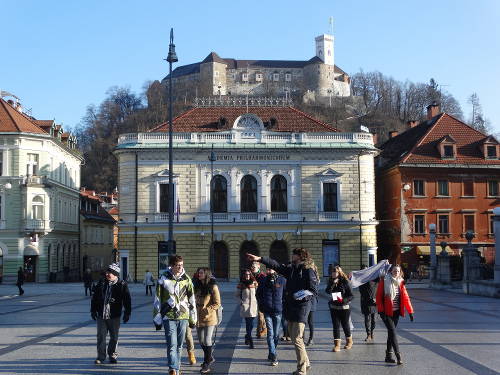 |
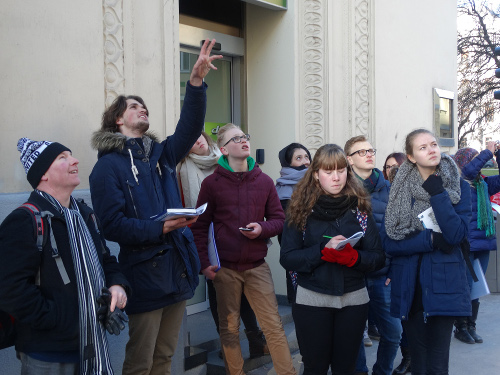 |
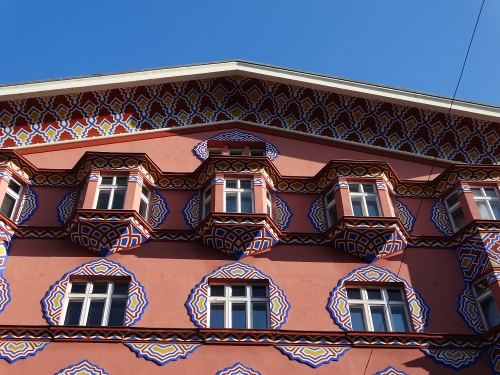 |
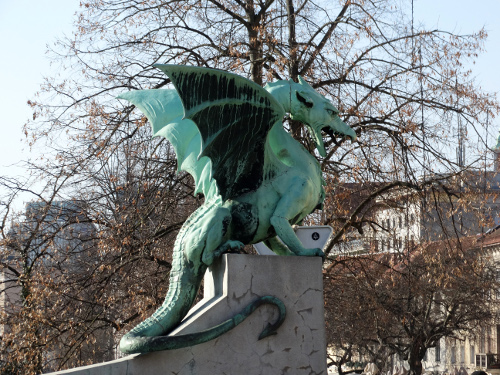 |
Tuesday
At the beginning of our third day in Slovenia we were told some interesting facts about our host school,
St Stanislav’s Institution. Founded in 1901 by the Diocese of Ljubljana, the school was closed at the end of World War II
and was turned into army barracks and a prison. In 1993, after Slovenia became an independent state, the building became a
school again after complete renovation. Next, we were taken on a tour of the school by pupils and we were especially
impressed by the Chapel and the Library.
After a short break, the first workshops started. In the Drawing workshop, we drew our own Art Nouveau pictures by following
templates which had been prepared for us by the Art teacher. In the Microscoping workshop, we used the structures of
microorganisms to inspire our own work in the Art Nouveau style. This influence of the natural world and of microorganisms
on art already existed at the beginning of the 20th Century. Ernst Haeckel’s book ,Kunstformen der Natur‘ (Art Forms of
Nature) was published at this time.
| |
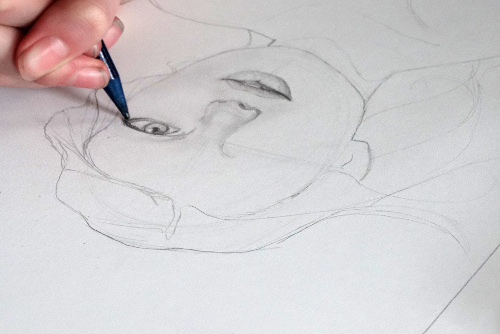 |
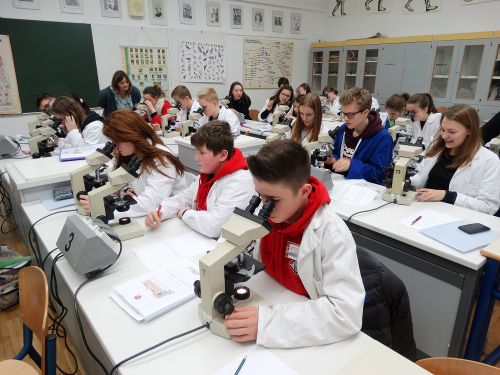 |
|
| |
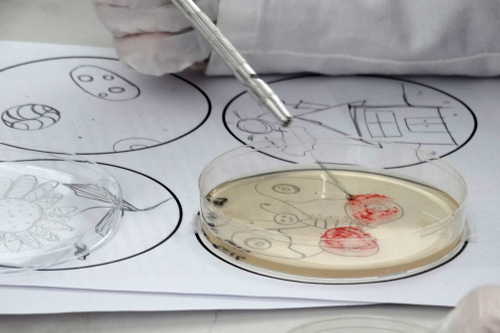 |
| |
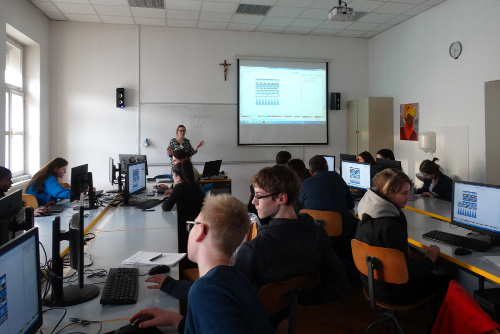 |
Wednesday
| Once again, the day started in the main hall at 7.45 in the morning. The Slovenian students presented the regions, sights, language and culture of their country. |
|
Next, we had three workshops to choose from.
In the Graphic Design workshop we continued our work from yesterday when we had learned the basics of a Graphic Design
software package. We used this knowledge to make our own design templates which were transferred onto mugs which the
participants can take to their home countries.
The Architecture workshop was led by Architecture students from the University of Ljubljana. We attempted to build copies
of Ljubljana's Art Nouveau/Secession buildings out of cardboard. We are not used to working with card and cardboard so this
was really difficult for us. The afternoon's activities involved decorating the façades of our buildings with
Art Nouveau/Art Renouveau designs using potato printing.
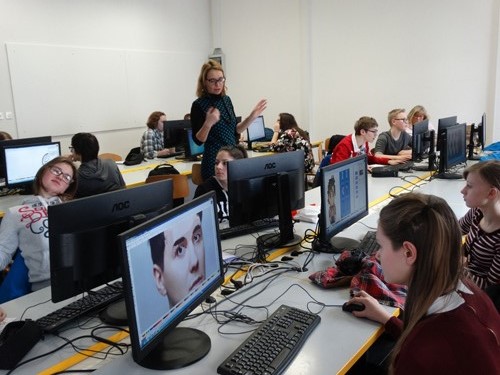 |
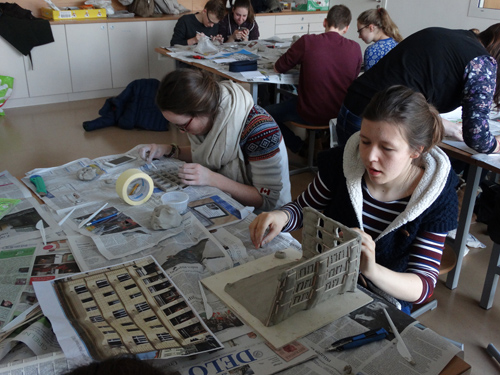 |
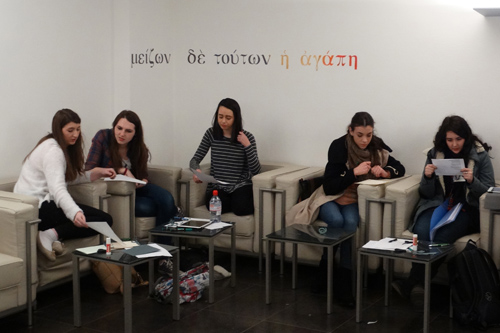 |
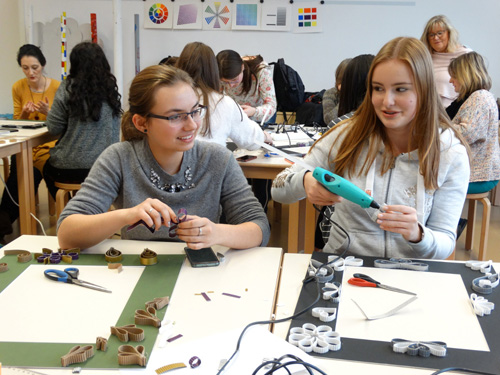 |
Our host partners came to collect us at four pm and we spent the rest of the day with them.
Thursday
| At the beginning of our fifth day in Slovenia we met in front of the school at 7.20 am to set off on our whole-day excursion. We reached the Škocjan caves after an hour. There we visited the caves which are between 40 and 144 metres underground. We saw lots of stalactites and stalagmites and the River Reka, too. At this point, the river flows underground. Everyone was really impressed by the size of the caves and by the underground canyon carved out by the River Reka. |
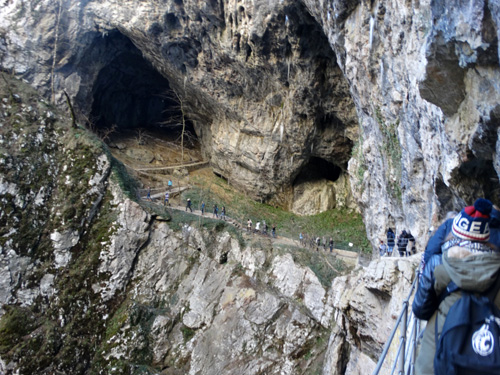 |
Next, we drove to the coastal town of Piran where the Slovenian students led us on a guided tour through the town. We really enjoyed the Mediterranean feel of Piran after the cold of Ljubljana.
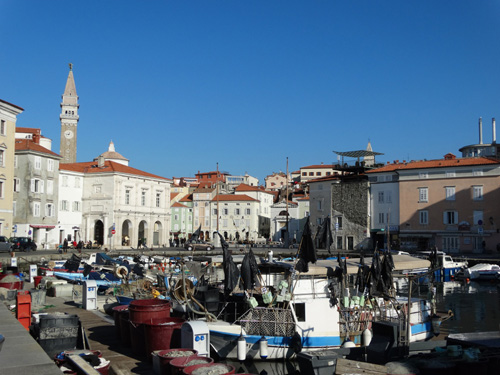 |
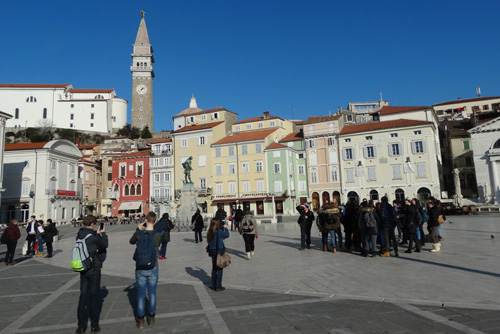 |
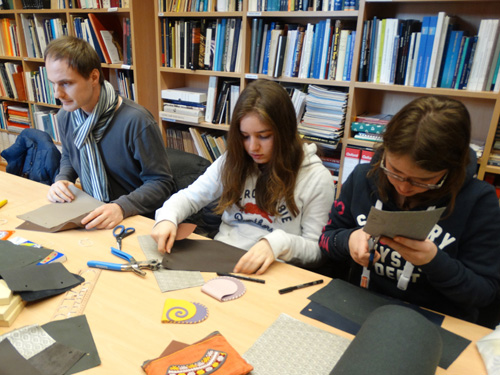 |
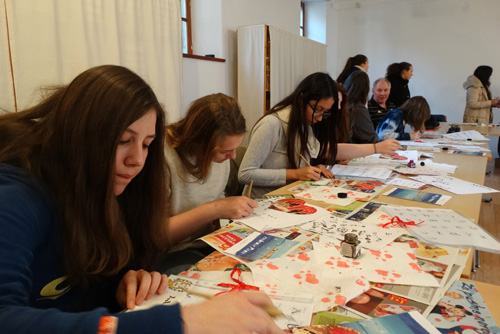 |
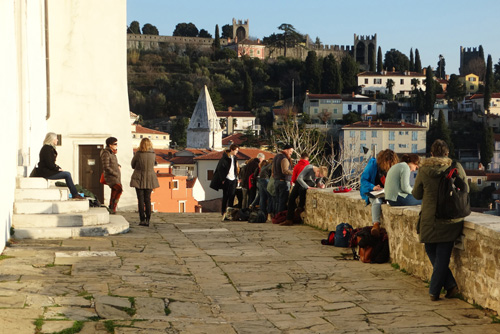 |
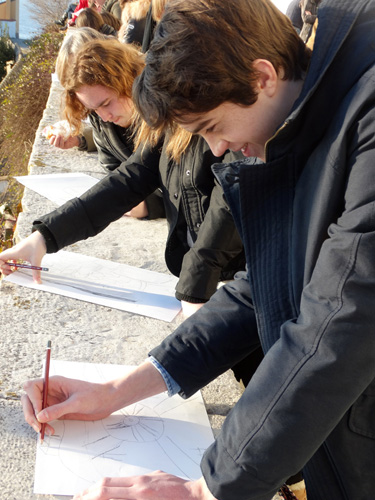 |
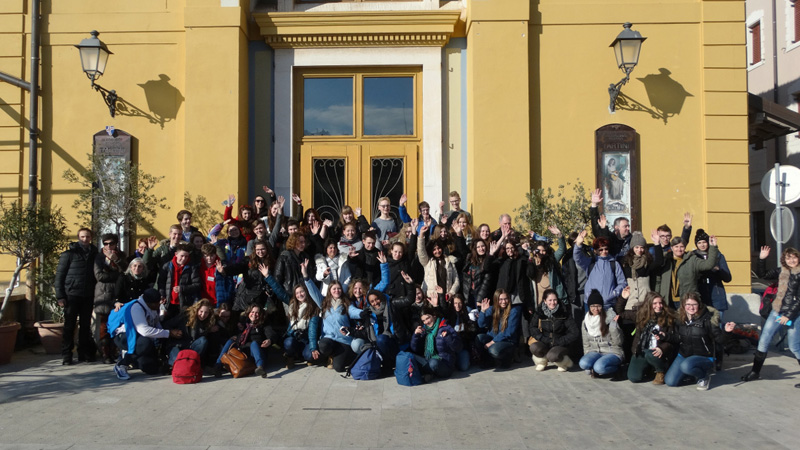
Friday
| On Friday, our last day in Slovenia, we gathered in St Stanislav's main hall and the day's programme was explained to us. Slovenian students took us to different classrooms and each national group had time to complete their reports for the Erasmus+ website. |
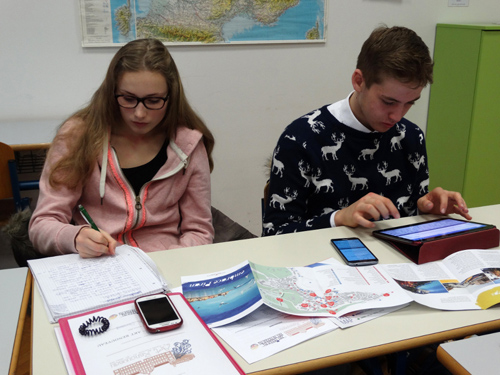 |
Next, the students who had taken part in the Literature Workshop showed us the results of their efforts. It was really interesting to hear poems in the different languages although, for the most part, we didn't understand anything!
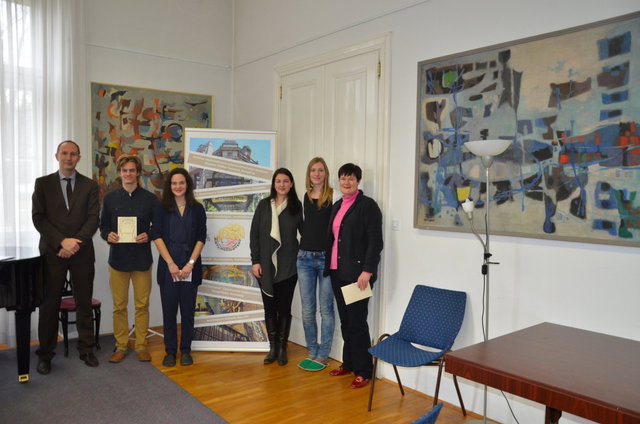 |
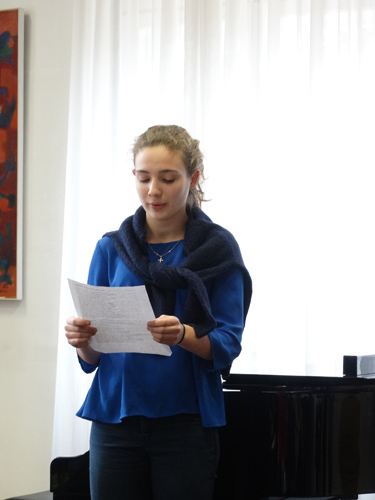 |
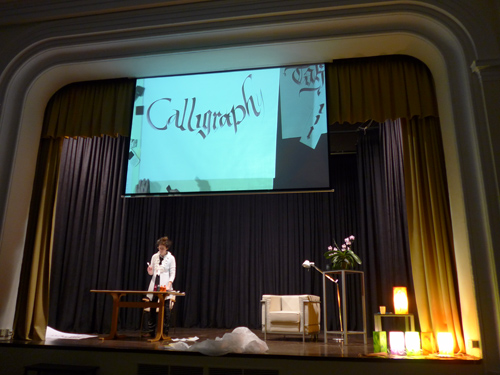 |
We returned to the main hall where Leredana Zega, a calligraphy artist, gave a performance of her show 'A Day in the Life of a Calligrapher'. She was very funny and this made her presentation very interesting. After the show, we filled in our evaluation forms where we could express just how much fun we had had during the week and how much we had enjoyed working together. |
After lunch and a final feedback session, we had time to set everything up for the Farewell Party and then to go into town.
When we arrived back at school we were greeted with a musical performance and the Slovenian students presented a summary of
our week in Slovenia. Through photographs and text, their Powerpoint showed us everything that we had done during the week.
It was at that point that we all realised just how quickly the time had passed and that our busy week was drawing to a close.
St Stanislav's Director, Dr Roman Gobokar, presented all the participants, teachers and coordinators with certificates of
participation at the Closing Ceremony.
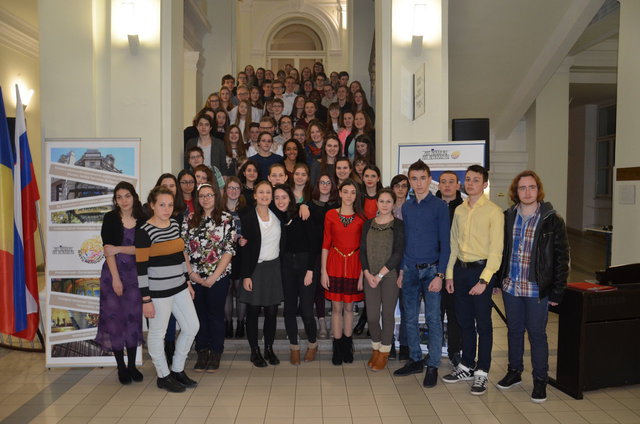 |
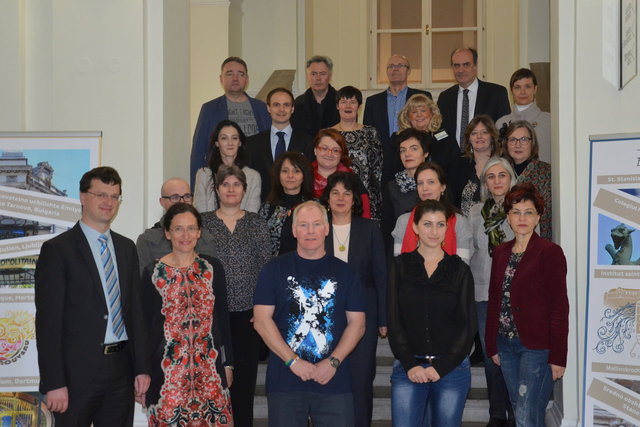 |
Then the Exhibition was declared open. The results of our week's work were on show and it was lovely to see how much we had produced in just a week. Then, as we were all hungry, we went into the main hall and had dinner. This was a final opportunity for the students and teachers of six nations to talk and to exchange contact details over dinner.
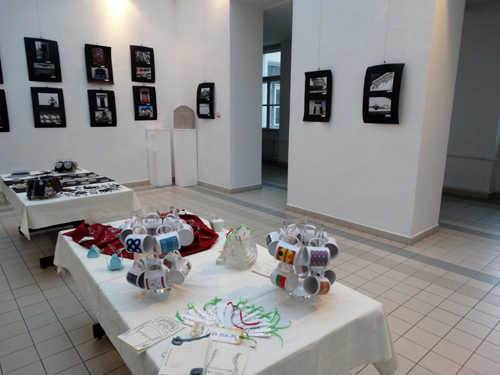 |
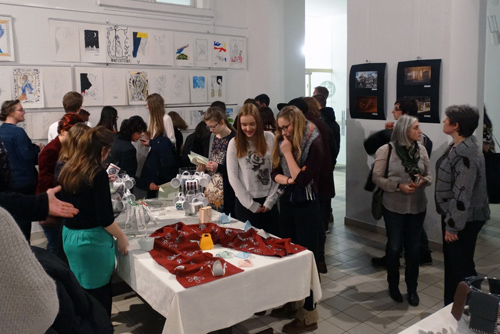 |
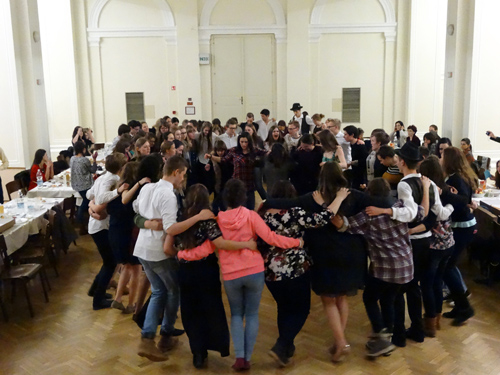 |
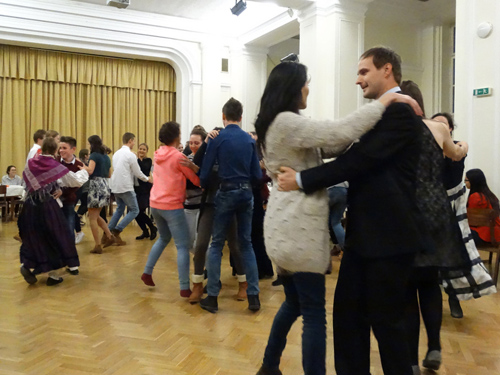 |
PETEK, 22.1.2016
V petek smo, kot tudi že ostale dni, morali biti v šoli ob 7. 45. Slovenski dijaki smo se poslovili od naših gostov in odšli k rednemu pouku. Medtem pa so naši gostje pripravljali razstavo vseh izdelkov, ki so bili narejeni v preteklem tednu. Po postavitvi razstave pa je sledil nastop umetnice Loredane Zega, ki nam je skozi pravo predstavo, predstavila dan v življenju umetnice kaligrafije. Sproti je izdelovala prave umetnine in nam dokazala da je kaligrafija zares umetnost in pa da življenje umetnikov ni najlažje. Potem je naše goste cakalo kosilo, še kasneje pa pisanje porocil za spletno stran Erasmus +. 7 šolsko uro pa smo vsi pomagali pri pripravi dvorane Matije Tomca za vecerno zabavo. In ob treh smo se lahko koncno odpravili domov in se uredili za že težko pricakovano zabavo.
Zvecer se je bilo potrebno vrniti nazaj v šolo. Najprej smo si ogledali razstavo, potem pa vstopili v dvorano in zabava se je zacela. Vsi dijaki so plesali, peli in smejali. Goste smo naucili plesati polko, dijaki posameznih držav pa so želeli nas nauciti svojih plesov in kmalu smo se vrteli v ritmih škotske, romunske, nemške, bolgarske in francoske glasbe. Vsi smo se zares potrudili, da je zabava uspela in verjetno se nam bo poleg vseh delavnic, le ta najbolj vtisnila v spomin.
Stella Starman, 2.e
Blog in Slovene
